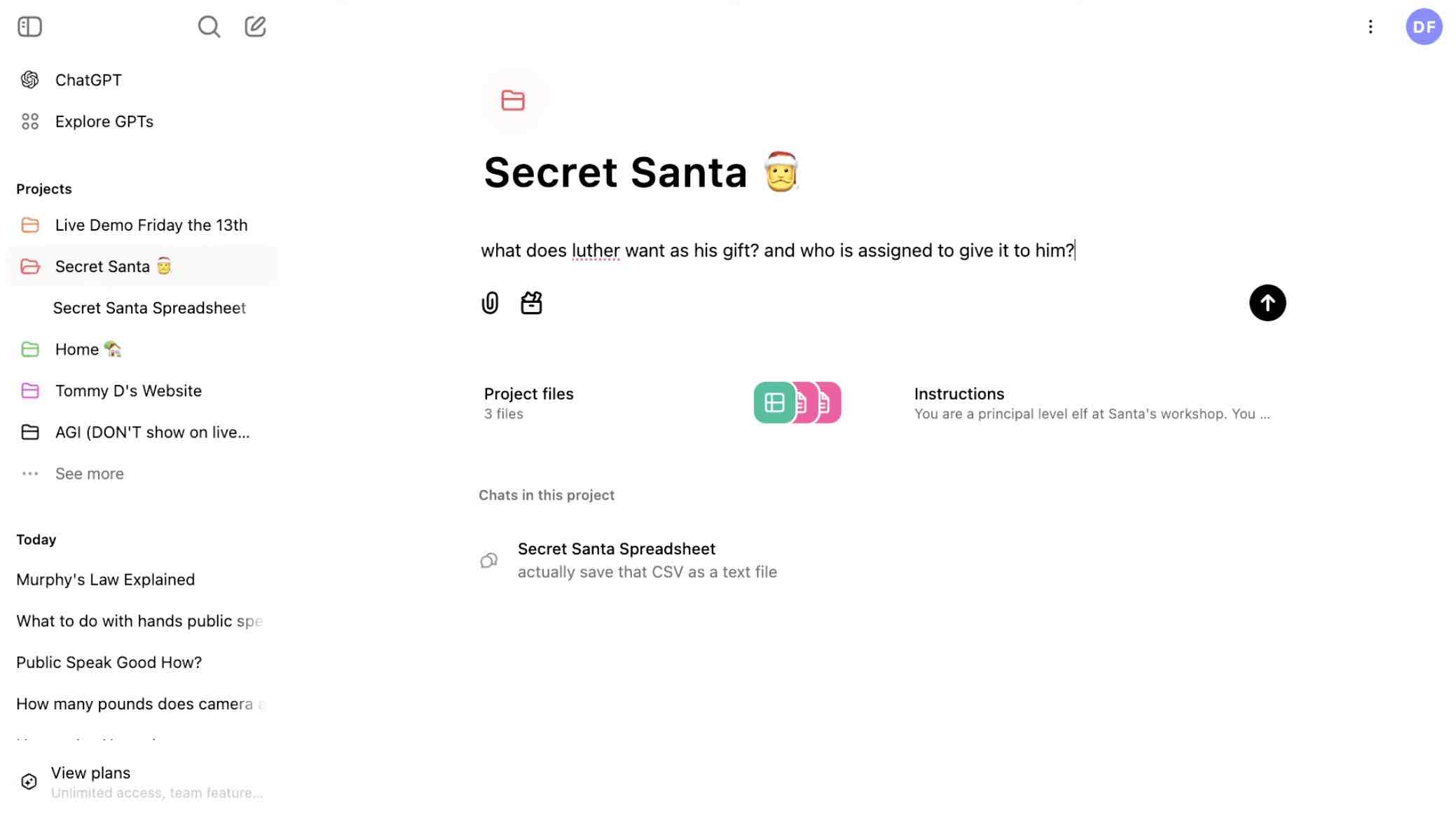ChatGPT's new Projects feature can organize your AI clutter
Organizing fun for everyone

- This new ChatGPT feature helps organize interactions with the AI chatbot.
- Within a Project, ChatGPT remembers specific instructions and relevant data.
- The Projects feature is rolling out now for ChatGPT Plus, Pro, and Teams subscribers.
Day Seven of 12 Days of OpenAI may not have included a conversation with Santa Claus like the day before, but the new Projects feature for ChatGPT would likely appeal to his elves.
OpenAI CPO Kevin Weil and his compatriots debuted Projects with a demo showcasing how it can organize your interactions with ChatGPT, including any files and data. Imagine a digital version of a messy desk covered in papers representing your talks with ChatGPT. Projects are the virtual file drawer full of neatly labeled folders put together by an assistant who has read each word on those papers.
When you start a Project, you need to name it and assign it a color to make it easier to find. Then, you can group related chats and upload any relevant files. You can also set specific instructions for ChatGPT to follow while working within that particular Project space. This means if you’re collaborating on a screenplay or building a website, you don’t have to keep reminding ChatGPT about the details every time you start a new chat. You can add existing chats to a Project, start new ones, and even pull in data from your files mid-conversation. Plus, features like SearchGPT and Canvas all play nicely within the Project space.

If Projects feels familiar, that's because it's a feature that some of ChatGPT's rivals already offer, most notably Claude, Anthropic's AI chatbot. So, OpenAI is catching up in some ways, offering a solution to a common frustration. Until now, keeping track of conversations with ChatGPT often meant dealing with a cluttered sidebar and a lot of scrolling.
While OpenAI has made strides with features like memory and customization, the ability to group chats and files into coherent, themed bundles is arguably as significant as switching from Post-It notes to binders.
Projects are also useful for building websites. You can upload design files and content ideas and specify your preferred coding languages. ChatGPT can then help you generate code for the site and improve any design or content. Unlike the usual ChatGPT coding help, the AI will remember what you've already worked on together because it happens within the same Project space.

Tidy AI
Weil and his team demonstrated Projects with various ways the tool might be employed. Since Santa was absent, he showed how to use Projects to organize a Secret Santa exchange instead. Instead of shuffling between spreadsheet tabs and copy-pasting the same info a million times, you create a Project with whatever rules and budget have been agreed upon, including a spreadsheet with everyone’s wish lists. All your Secret Santa data lives there, and you can tell ChatGPT to manage it, even having the AI send out anonymous emails with gift assignments.
Get daily insight, inspiration and deals in your inbox
Sign up for breaking news, reviews, opinion, top tech deals, and more.
Of course, there are a few potential issues. For one, the effectiveness of Projects depends on how clearly you communicate with ChatGPT. As the demo shows, being vague can lead to unintended results (like revealing Secret Santa secrets). Further, organizing through Projects won't make up for any sloppy prompts or not checking for errors in the output.
You'll need a ChatGPT Plus, Pro, or Teams subscription to use Projects for now, though those on the free tier will get access soon. Still, they may need to make a note to remind them about it since they don't have Projects available yet.
You might also like

Eric Hal Schwartz is a freelance writer for TechRadar with more than 15 years of experience covering the intersection of the world and technology. For the last five years, he served as head writer for Voicebot.ai and was on the leading edge of reporting on generative AI and large language models. He's since become an expert on the products of generative AI models, such as OpenAI’s ChatGPT, Anthropic’s Claude, Google Gemini, and every other synthetic media tool. His experience runs the gamut of media, including print, digital, broadcast, and live events. Now, he's continuing to tell the stories people want and need to hear about the rapidly evolving AI space and its impact on their lives. Eric is based in New York City.